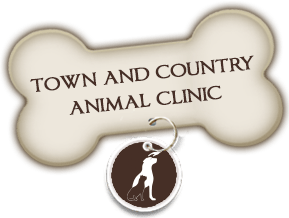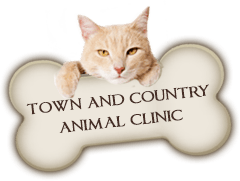Approximately one out of every five dogs suffers from some type of allergy. Although allergies cannot be prevented, they can be controlled.
What is an Allergy?
An allergy is a condition in which the immune system reacts abnormally to every day substances such as insect bites, foods and chemicals, pollens, molds, and house dust. The offending substances that cause these hypersensitivities are called “allergens.” Reactions can vary in severity from mild discomfort to fatality.
Dogs and Allergies
Dogs, like humans, can suffer from allergies. Some animals inherit the tendency to develop allergies. Some develop them after repeated exposure to the allergens. The dog gradually experiences longer and more severe periods of allergic symptoms. These symptoms cannot only make your dog miserable, but can seriously impair his health and well being.
Signs of Allergies
Allergy symptoms may be seasonal or year round. The most common signs are scratching, itchiness, face rubbing, biting and chewing. Excessive scratching can result in redness, rashes, hair loss and secondary infections. The most common problem areas are the flank, back, base of tail, abdomen and feet.
Although not all scratching is due to an allergy, if your dog seems to be scratching more than usual, check the skin for these signs. If you notice some of the signs described above, or if the scratching persists, your dog should likely have a checkup to determine if there are allergies present.
Types of Canine Allergies
There are basically four types of canine allergy:
- Fleabite Allergic Dermatitis (F.A.D)
- Food Allergy Dermatitis
- Contact Allergic Dermatitis
- Atopy (Inhalant) Allergic Dermatitis
Flea Allergic Dermatitis (F.A.D.)
FAD is the most common form of canine allergy. One flea bit can cause prolonged itching in a dog allergic to fleas. Only stringent flea control can eliminate, or at least minimize, the affects of FAD on a dog allergic to fleas.
Food Allergy Dermatitis
Symptoms of food allergies vary from skin problems to vomiting and diarrhea. A food allergy is usually caused by eating the offending food substance for months to years. Pets do not become allergic to a brand name (ex: Purina, Alpo): they become allergic to specific ingredients in the diet.
Recommendation:
A food or contact allergy can be controlled by eliminating the offending substance. Determining what the dog is allergic to is usually done through “trial and error.” Removing one food at a time from the dog’s diet and then possibly re-introducing it may identify which food(s) is the culprit.
Contact Allergic Dermatitis
Contact allergies (exhibited by the loss of hair, red skin, pimplelike eruptions, etc.) are quite rare in dogs and might be confused with such conditions as inhalant or food allergies, insect bite reactions, hookworm dermatitis, irritant contact dermatitis or scabies.
Recommendation:
If after considering the other conditions mentioned above, a contact allergy is still suspected, changing shampoos, etc. may prove helpful.
Atopy (inhalant) Allergic Dermatitis
This is the term used for allergies caused by pollens, molds, house dust and other common airborne substances. These allergies will cause itching and scratching. It is almost impossible to avoid these airborne. By desensitizing your pet to the offending substances, the symptoms can be controlled. This process is called “immunotherapy.”
Recommendation:
- Blood Serum Testing
- Intradermal Testing
Allergy Testing (Two Types)
Before treatment can begin, the allergens causing your dog’s reactions must be identified. It is important that you be able to provide a detailed history of your pet’s symptoms. If the history and physical exam reveal no other cause of the problem, tests may be conducted for allergens. There are two basic types of allergy tests:
- The traditional skin test which involves clipping the hair from an area and injecting small amounts of allergens into different sites.
- The blood (or serum) test which requires drawing a small amount of blood for laboratory analysis.
Treatment of Allergies
Recommendation is to avoid the following allergens:
- Fleas
- Conventional Soaps
- Beef Products
- Dairy Products
- House Dust
- Biting Insects
- Pollens
- Molds
- Walks in long grasses
Grooming and bathing may minimize the effects of allergies. We may recommend increasing the frequency that you bath your pet during the allergy season. Hypoallergenic shampoo, rinse or sprays may help relieve your pet’s symptoms.
Just like you and me, antihistamines help your pet’s allergy symptoms in the short term. Many human antihistamines are effective if used properly in your pet.
Corticosteroids are very effective in relieving your pet’s itching symptoms. Although long-term therapy must be avoided, intermittent use when needed is well accepted. Injections, pills and liquids are commonly used.
Immunotherapy Treatment of Allergies
When an allergen cannot be avoided, or when medication is not feasible, immunotherapy will lessen sensitivity. Immunotherapy is a process whereby increasingly larger and larger amounts of the offending allergens are injected into your dog. The dog’s immune system gradually becomes “desensitized” to these allergens. In a large number of dogs, symptoms can be controlled safely and effectively.
Home Care with Immunotherapy
You will be given treatment vials, syringes and a dosage schedule. Refrigerate the vials immediately to maintain the potency of the allergens. Pick a time when you can observe your dog for 40 minutes after the injection. It is best not to heavily exercise of feed your dog one hour before or after an injection. In the rare instance of an adverse reaction, call the Clinic.
Reactions
Although adverse reactions are rare, some itchiness is normal during the “build-up” phase. However, if you notice any change in your dog’s behavior (ex: excessive sleep, hyperactivity, or lethargy), do not hesitate to call the Clinic. Laboured breathing, vomiting, diarrhea, collapse, or hives over the entire body indicate serious reactions and require immediate veterinary attention.
Results
All dogs are different. It is not unusual to see some improvement during the first month, but usually improvement is noticed only within three to four months. It takes time for your pet’s system to build the necessary antibodies. Immunotherapy should be continued for a minimum of six to nine months to give your dog time to improve. During the “build-up” period, antihistamines or cortico-steriods may be used to keep your pet comfortable. Your dog’s chances for a good response depend upon:
- Complete discovery of all allergens causing the problems.
- A consistent injection schedule.
- An active and healthy immune system.
- Otherwise good health.
In order to maintain the response, it is necessary to adhere to the injection schedule set up for your dog.
Duration of Treatment
Once your dog’s symptoms are controlled, you may find that you can stretch the time periods between injections up to one month. It all depends on your pet’s immune system and the prevalence of the allergens to which he reacts. However, any change in the schedule should be made in consultation with the veterinarian.






